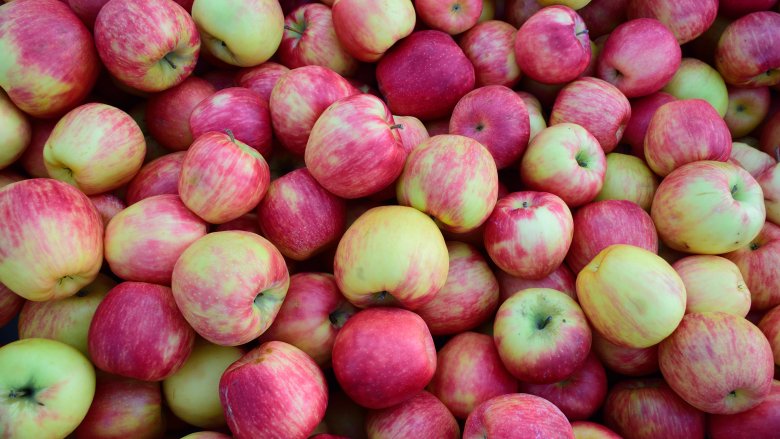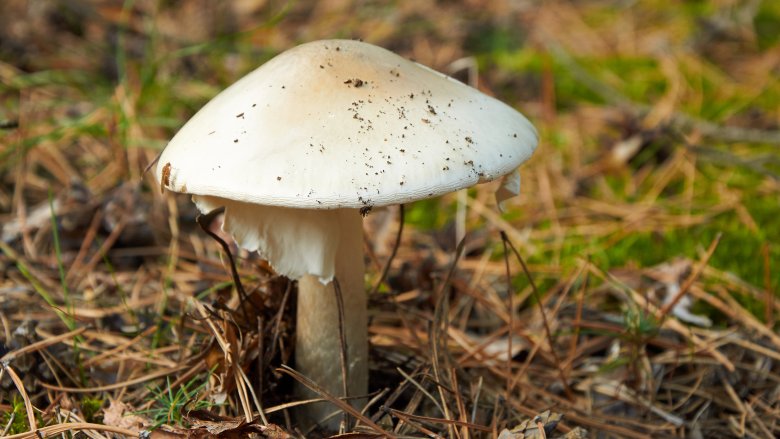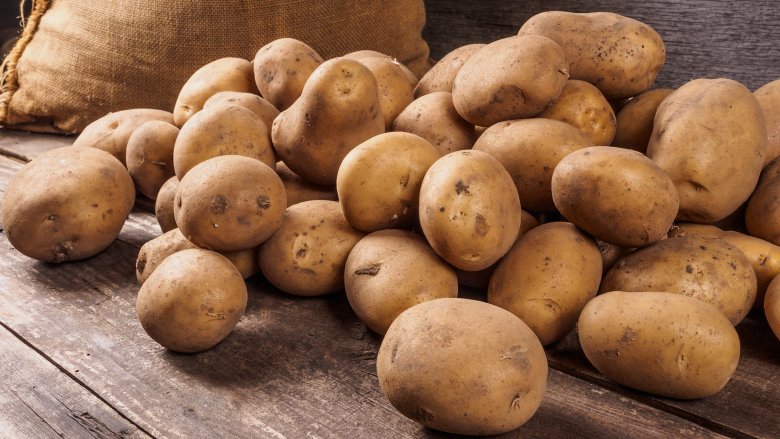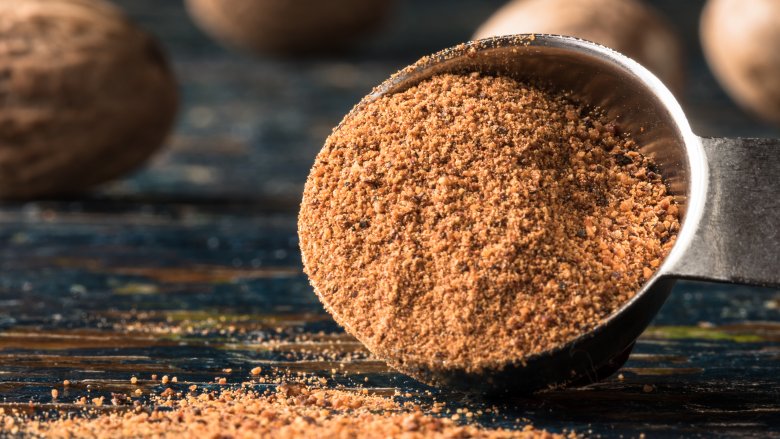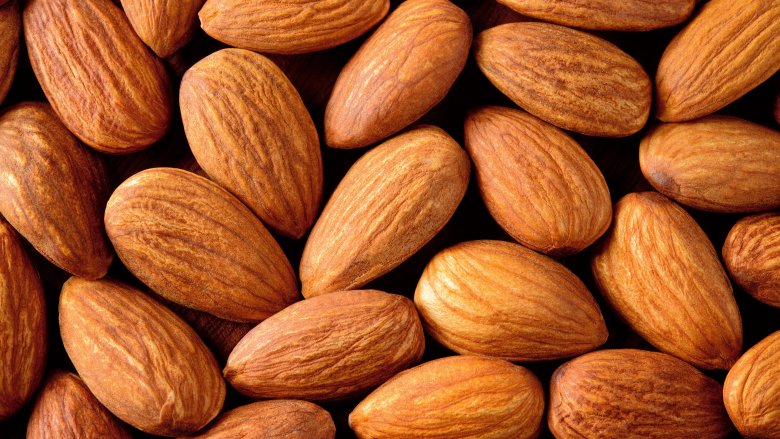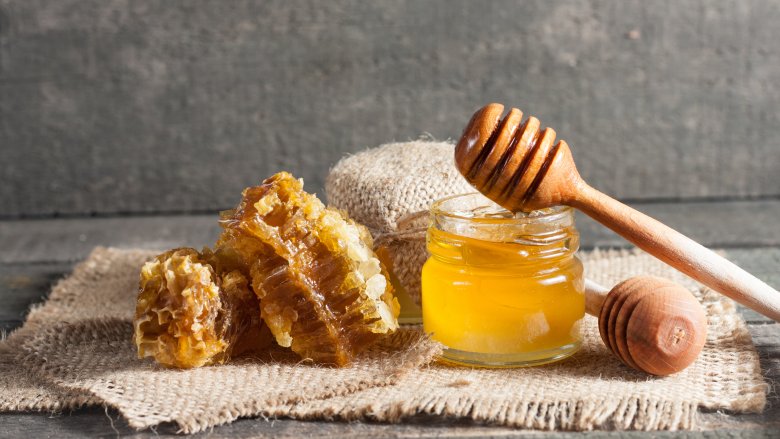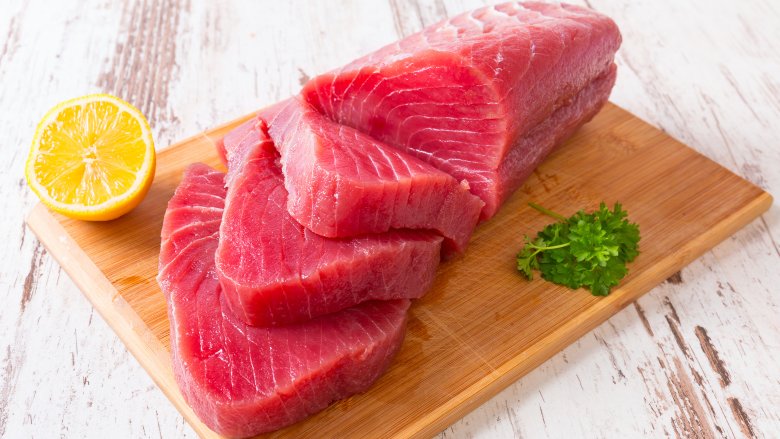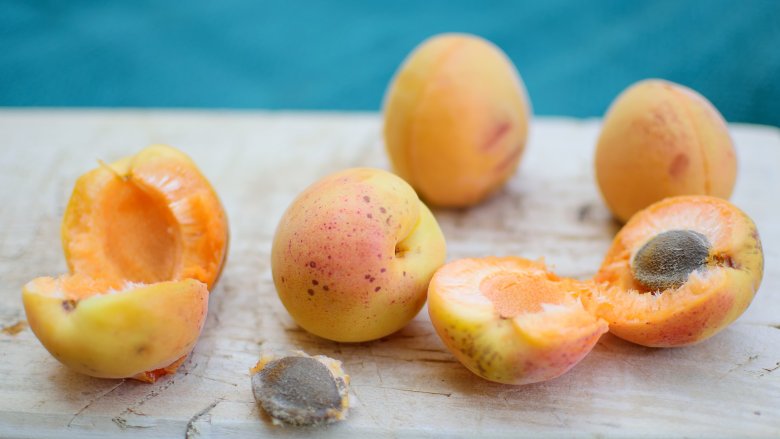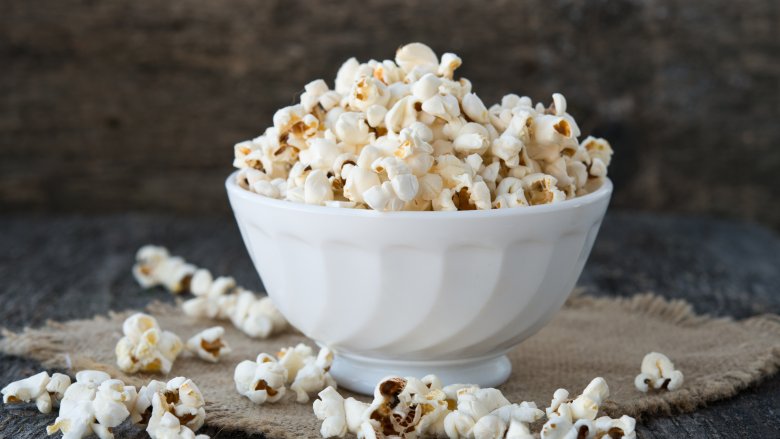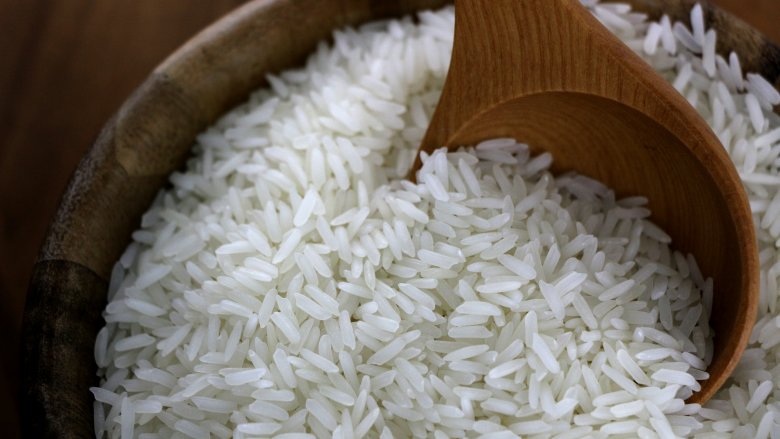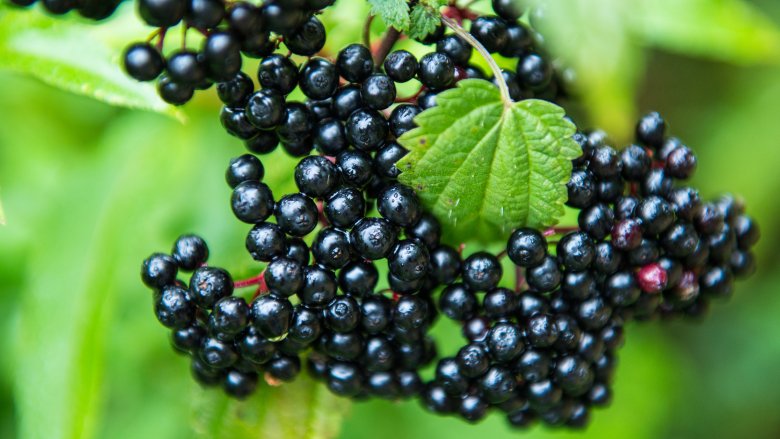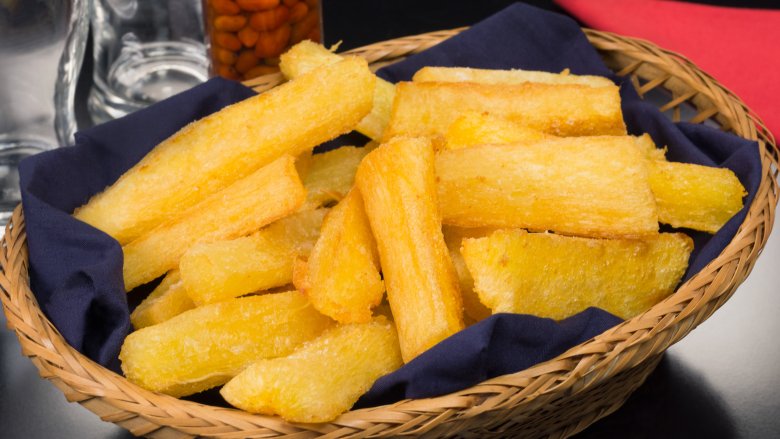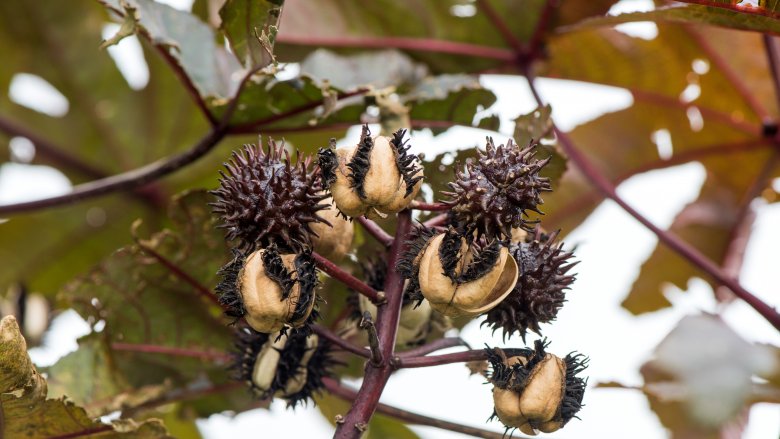These Deadly Foods May Be In Your Kitchen Right Now
When you think about deadly foods, you mind probably wanders to stuff you wouldn't usually want to touch with a barge pole (raw meat, killer plants like nightshade or hemlock, that puffer fish which people keep inexplicably eating in Japan) but you never give a lot of thought to the notion that your very own kitchen is chock-full of poisonous items which, if you're unlucky, can bring you to a pretty nasty end. What might actually go wrong tends to vary, however — some of these will need to be eaten raw, some must be prepared incorrectly, some require you to eat unfathomably large amounts in order to actually kill you — but they're all nonetheless utterly deceptive in their innocuousness. So handle with care.
Mushrooms
Mushrooms are well-known for being dangerous. They may be one of the most commonly-used vegetables in the kitchen, but out in the wild, making the wrong choice or misidentifying a mushroom can lead to disaster. This doesn't stop people foraging for them, however.
Most worrying of all is the death cap mushroom. Unlike some poisonous mushrooms, it's fairly plain in appearance and can be easily mistaken for an edible fungi. It also happens to smell and taste delicious, according to the unfortunate souls who've tasted it. Upon ingestion, symptoms (which initially include cramps, vomiting and diarrhea, but later results in total liver failure) kick in within a day. In the end, it only takes a few bites to kill you. We can't say it enough: If you're taken with the need to forage for mushrooms, take someone knowledgeable with you and stick to the easy stuff.
Potatoes
Unlike mushrooms, potatoes aren't exactly infamous for their deadliness. The key to the danger behind them, however, lies with these little things known as glycoalkaloids. Glycoalkaloids are toxins that act as a natural defence mechanism, built into potatoes and other close relatives. They essentially act as a pesticide and fungicide to any animal, insects or fungi that would want to attack and consume them. Whether a batch of potatoes might be high in glycoalkaloids basically comes down to where you're getting them from, and the USA and Sweden have both been involved in scandals in which potato varieties were banned because they were high in the toxin.
If you're unlucky enough to suffer from potato poisoning, you can probably expect an onset of nausea, vomiting, diarrhea, cramps and headaches, though paralysis and death occurrences have been recorded. The best way to control your potatoes is to make sure they're mature, store them away from light and avoid keeping them at low temperatures for too long.
Nutmeg
If you're planning to buy whole nutmeg anytime soon, you'd best be careful. It may instill a bit of that warming, holiday cheer, but remember this next time to use it: a toxic dose of nutmeg is no more than two or three teaspoons. The spice is well-known for its application as a psychedelic and, for many, a cheap alternative to heroin, but it's also toxic enough to put you in the hospital very, very easily. Symptoms include nausea, dizziness and a slowing of brain functions, and the chemical that causes most of this is known as myristicin. Cases of nutmeg poisoning are rare, and tend to result from deliberate attempts to use the spice as a drug, but it's still easy to misuse it in the kitchen. And you really don't want to be spending your Christmas at a poison control center — or worse.
Almonds
There are two types of almonds that exist, and it's a good chance the almonds you have in your kitchen are what are known as sweet almonds. You might, however, want to double-check. Bitter almonds are found on certain trees which contain a recessive gene in the nut, and contain a certain chemical known as glycoside amygdalin.
When you consume raw bitter almonds, that glycoside amygdalin is transformed into hydrogen cyanide, which history buffs might recognize as being the chief ingredient in Zyklon B, the chemical used in Nazi gas chambers. The lethal dose of hydrogen cyanide is 100 to 200mg (which really isn't a lot) and probably constitutes anywhere from ten to twenty bitter almonds. It's no surprise that cyanide itself is infamously known to smell like almonds.
Honey
Honey's place on this list comes largely from the findings of the FDA, who discovered a pesticide known as glyphosate in samples taken back in 2016. Residue was discovered in every single sample taken by the FDA, with some showing double the amount permitted in honey within the European Union. Particularly damning were the levels of glyphosate discovered in Carmichael's Honey, which is based out of Louisiana.
It would take a hefty dose of glyphosates to put you in harm's way, and many poisoning cases lead to nothing more than mild gastrointestinal problems, but more serious cases have led to respiratory distress, shock, renal failure and further negative symptoms, including death.
Tuna
Tuna, being an oily fish, is a crucial part of a balanced and healthy diet — and one of the most popular fish to eat in the United States. However, it also happens to contain mercury, a chemical you don't exactly want to consume too much of. It's naturally-occurring, but made worse from emissions from power plants and other industrial sources (go humans), and can be a significant health risk for young children, who are especially susceptible to mercury's effects.
Fruit seeds
Certain fruit seeds are particularly well-known for containing toxins that are potentially harmful to the human body. Apple seeds, for example, contain our old friend amygdalin, so cyanide is at play here. You'd have to chew into the seeds to release that amygdalin, and your body can fight back against a little bit of the cyanide that will be produced, but at large amounts you're looking at some significant risk.
The same goes for stones, such as those found in apricots, peaches and cherries. Again, you'd have to eat a fair amount to cause you any harm — a few dozen apricot kernels, for example, should induce vomiting, abdominal pains and suffocation. As long as you're not chowing down on apple seeds and cherry stones as part of your actual diet, however, you should be okay.
Microwave popcorn
So, you're pretty unlikely to find cyanide or ricin or anything like that lurking within the kernels of your microwave popcorn (unless somebody is out to get you) but that doesn't mean there aren't some significant health risks associated with it. A chemical used in the coating of popcorn bags can decompose and create perfluorooctanoic acid, which has been associated with liver and prostate cancer. A flavoring agent in microwave popcorn, known as diacetyl, has also been known to lead to a lung condition known as bronchiolitis obliterans.
I'd recommend you make your own popcorn rather than buying the microwaveable version, but if you must go down the easy road, at least make sure to let it cool before you open the bag to decrease the amount of diacetyl you're likely to breathe in. Frankly, the risk isn't too high and this isn't exactly something to start panicking about, but still, better safe than sorry.
Rice
Despite being all innocent-looking and unremarkable, rice actually contains another chemical you probably want to avoid in large doses: arsenic. Rice tends to absorb arsenic, both organic and inorganic, more than any other food, and the FDA suggests you should avoid eating rice in excess because of the arsenic content within.
They also recommend feeding infants other grain varieties, such as oat, barley and multigrain. Essentially, if you're pregnant or you're feeding a child, it's likely best to mix up your intake rather than relying solely on rice. If you are cooking with rice, boil it in water at a ratio of 6:1 and drain the water afterwards to remove the majority of the arsenic content. Otherwise, you should be alright.
Elderberries
Elderberries are well-known for their health benefits, being frequently used to treat colds and flu, among other ailments. They're also an ingredient found in a number of foods and drinks, such as jams, syrups and cordials. Unlike many berries, however, which can be foraged freely and without risk, elderberries are a little bit more touch-and-go.
The seeds, stems, leaves and roots of the black elderberry, which is the most commonly found species of the plant, for example, are poisonous, containing — you guessed it — glycoside. Eat enough and it's cyanide poison once more, with all the trappings (fever, diarrhea, coma, death) that come with it. Since half of the berry is made up of the seed, it can be particularly dangerous to eat elderberries whole and uncooked.
Cassava
Cassava is a root plant found in South America and the Caribbean, and makes up a crucial part of people's diets (most commonly in poverty-stricken and impoverished communities) around the world. It can be boiled, baked, steamed, grilled, fried or mashed, and is often served as a vegetable side to meats. Like almonds, cassava is found in a bitter and a sweet form, and, again like almonds, it also contains hydrocyanic acid — or cyanide.
If the cassava plant isn't properly processed, or if it's eaten raw, the cyanogens contained within can lead to goiter and nerve disorders at best, and an irreversible paralytic disorder known as Konzo, or death, at worst. This is an issue particularly in Africa, where cassava is often eaten without being processed correctly.
Castor beans
Castor oil has more than a few uses in modern day cooking, and even has applications beyond the kitchen, including skin and haircare. What you may not know, however, is that the bean from which it's pressed contains a special little toxin known as ricin. Only a very small amount (a single ounce of castor beans can be lethal) will induce vomiting, diarrhea, kidney failure, convulsions, fevers, a coma and then death. It's famous for its use in the assassination of a Bulgarian journalist in 1978, who was stabbed with a ricin-laced umbrella, and might be recognizable to television fans for its key role as a plot point in AMC's "Breaking Bad."
Luckily, castor oil itself doesn't actually contain ricin, so you're pretty much free to use it at will. If you're out foraging, however, and come across the castor bean plant and decide to take advantage of it, well — don't.
